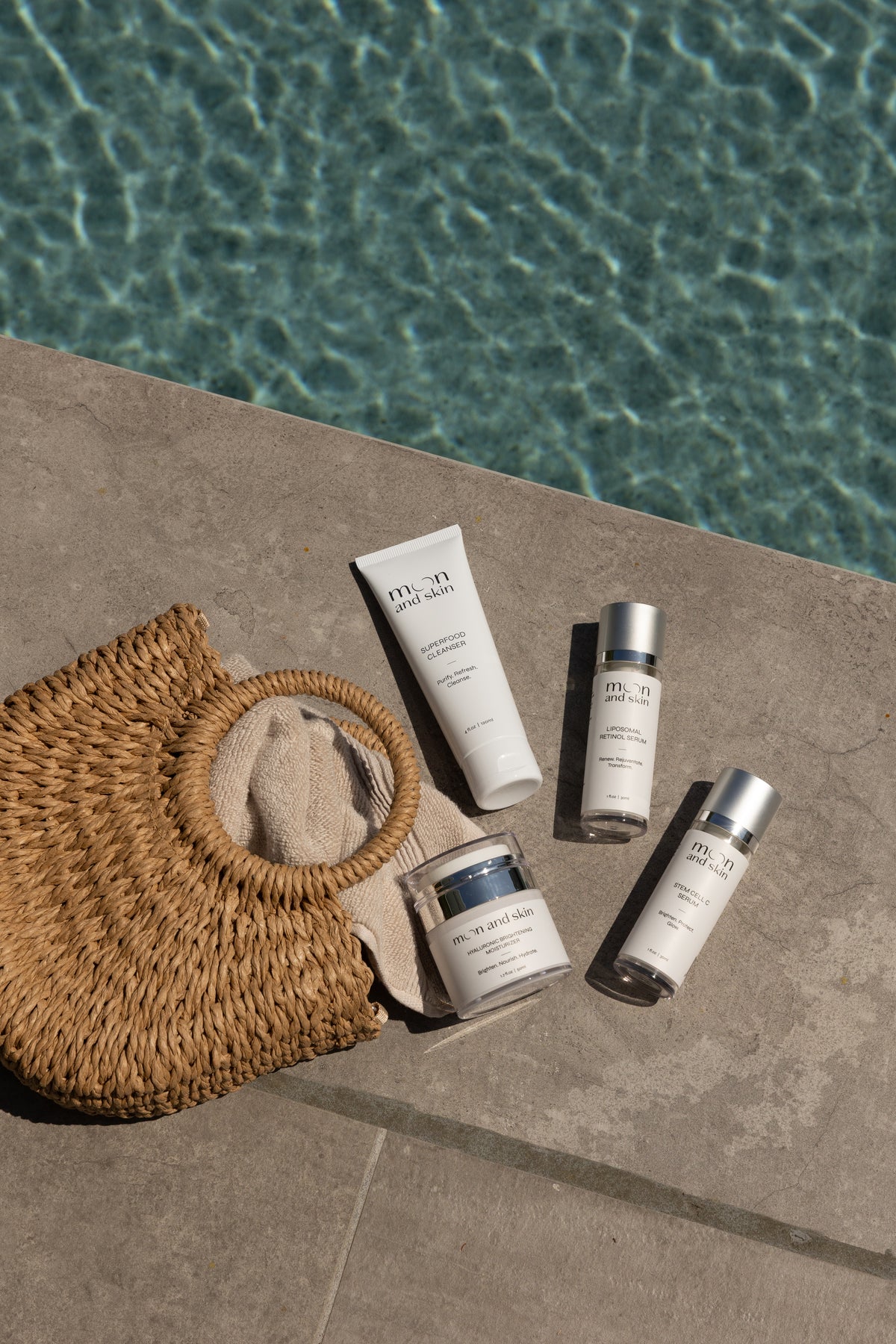Table of Contents
Introduction
Hyperpigmentation can feel like a shadow that dims our natural glow and radiance. This common skin concern manifests as dark patches or spots caused by an excess of melanin, the pigment responsible for our skin color. While hyperpigmentation is usually harmless, it can often lead to decreased self-esteem and a desire for treatments that promote an even skin tone. As we explore the potential of vitamin E in addressing hyperpigmentation, we aim to provide you with a comprehensive understanding of its benefits, mechanisms, and practical applications.
In recent years, the spotlight on vitamin E has intensified, with many skincare enthusiasts and experts questioning, "Does vitamin E really help with hyperpigmentation?" We understand that navigating the world of skincare can be overwhelming, especially when it comes to finding solutions for persistent skin issues like hyperpigmentation. That’s why we’re here to shed light on this powerful vitamin, break down its role in skin health, and provide actionable insights on how to incorporate it into your skincare routine effectively.
In this post, we will cover the following:
- The role of vitamin E in skin health
- How hyperpigmentation affects the skin
- The effects of vitamin E on hyperpigmentation
- Practical tips for using vitamin E for skin improvement
- Potential side effects and who should use it
Together, we'll explore how vitamin E can contribute to a more radiant and even complexion.
What is Hyperpigmentation?
Hyperpigmentation refers to the darkening of certain areas of the skin due to an overproduction of melanin. There are several types of hyperpigmentation, including:
Types of Hyperpigmentation
- Sun-Induced Hyperpigmentation: Prolonged exposure to UV rays can stimulate melanin production, leading to sunspots or age spots.
- Post-Inflammatory Hyperpigmentation (PIH): This occurs after an injury or inflammation of the skin, such as from acne, eczema, or psoriasis.
- Hormonal Hyperpigmentation: Often seen during pregnancy or with the use of hormonal contraceptives, this type of hyperpigmentation is known as melasma and commonly appears on the face.
Causes of Hyperpigmentation
- UV Exposure: Sunlight is one of the primary culprits that triggers melanin production.
- Hormonal Changes: Pregnancy, birth control pills, and other hormonal fluctuations can lead to increased pigmentation.
- Skin Inflammation: Conditions like acne, eczema, or injury to the skin can result in PIH.
- Certain Medications: Some drugs can cause photosensitivity, leading to hyperpigmentation when exposed to sunlight.
- Aging: As we age, our skin's ability to regenerate and repair itself diminishes, leading to the accumulation of dark spots.
Understanding these causes is essential for choosing the right treatment and prevention strategies.
The Role of Vitamin E in Skin Health
What is Vitamin E?
Vitamin E is a fat-soluble antioxidant that plays an essential role in maintaining skin health and overall well-being. It is available in various forms, with alpha-tocopherol being the most common and biologically active form found in human tissues.
Benefits of Vitamin E for the Skin
- Antioxidant Properties: Vitamin E protects skin cells from oxidative stress caused by free radicals, which can accelerate aging and worsen hyperpigmentation.
- Moisturizing Effects: It helps to retain moisture in the skin, which is vital for maintaining a healthy barrier and overall skin texture.
- Anti-Inflammatory Effects: Vitamin E can soothe irritated skin, reducing redness and inflammation associated with conditions like acne.
- Promotes Skin Healing: This vitamin supports the regeneration of skin cells, making it beneficial for healing scarred or damaged skin.
These properties make vitamin E a promising candidate for addressing hyperpigmentation and improving overall skin health.
How Vitamin E Helps Reduce Hyperpigmentation
Mechanisms of Action
Vitamin E contributes to reducing hyperpigmentation through several mechanisms:
- Inhibition of Melanin Production: Vitamin E can inhibit the enzyme tyrosinase, which plays a crucial role in the synthesis of melanin. By limiting melanin production, vitamin E may help lighten dark spots over time.
- Reduction of Oxidative Stress: By combating free radicals, vitamin E helps protect skin cells from damage that can lead to pigmentation issues. This antioxidant effect can also enhance the effectiveness of other ingredients used in treatments for hyperpigmentation.
- Promotion of Skin Repair: Vitamin E aids in skin cell regeneration, which can help fade dark spots and improve skin texture.
Effectiveness of Vitamin E Cream for Hyperpigmentation
While vitamin E shows promise in the fight against hyperpigmentation, it is essential to note that its effects are often moderate compared to other active ingredients like vitamin C or retinoids. Many skincare experts recommend combining vitamin E with other effective treatments for better results.
Our Stem Cell C Serum, for example, pairs the brightening power of vitamin C with antioxidants to target hyperpigmentation more effectively.
How to Incorporate Vitamin E for Hyperpigmentation
Integrating vitamin E into your skincare routine can be simple and effective. Here are several ways to do this:
1. Choose the Right Form of Vitamin E
- Topical Oils: Pure vitamin E oil can be applied directly to dark spots, but it may be thick and heavy for some skin types. It’s best suited for drier skin types.
- Serums and Creams: Look for products that contain vitamin E as an active ingredient. These formulations are often lighter and easier to incorporate into your routine.
- Combination Products: Consider products that combine vitamin E with other antioxidants, such as vitamin C or niacinamide, for enhanced benefits.
2. Patch Test First
Before using any new product, especially oils or serums, conduct a patch test to ensure you don't have an adverse reaction.
3. Cleanse Your Skin
Always start with a clean face. Use a gentle cleanser, such as our Superfood Cleanser, to remove impurities and prepare your skin for treatment.
4. Apply Vitamin E
- If using pure vitamin E oil, consider mixing it with a carrier oil (like jojoba or almond oil) to lighten the texture.
- Apply it to affected areas using gentle circular motions to stimulate circulation.
5. Combine with Other Treatments
For optimal results, pair vitamin E with other treatments targeting hyperpigmentation. For example, using our Liposomal Retinol Serum in conjunction with vitamin E can enhance cell turnover and improve skin texture.
6. Use Sunscreen
Since UV exposure can exacerbate hyperpigmentation, applying broad-spectrum sunscreen daily is essential. Protecting your skin from further sun damage is crucial to seeing results.
7. Be Consistent
Regular application is key to achieving noticeable results. Incorporate vitamin E into your routine consistently to help fade dark spots over time.
8. Monitor and Adjust
Keep track of your skin's response to vitamin E. If you experience irritation, reduce frequency or concentration, and consult a dermatologist if needed.
Potential Adverse Effects of Vitamin E Cream
While vitamin E is generally well-tolerated, some individuals may experience side effects, especially with pure oil formulations. These can include:
- Clogged Pores: Those with oily or acne-prone skin may find that thick products cause breakouts.
- Allergic Reactions: Although rare, some people may experience redness or irritation. Discontinue use and consult a professional if you notice any adverse reactions.
It’s always a good idea to consult a dermatologist before introducing new products into your routine, particularly if you have sensitive skin or underlying conditions.
Conclusion
Vitamin E can be a valuable ally in the pursuit of a more even complexion, particularly when it comes to addressing hyperpigmentation. Its antioxidant properties, coupled with its ability to promote skin healing and moisture retention, make it a worthy addition to any skincare routine. However, for the best results, we recommend combining vitamin E with other effective treatments.
By embracing a holistic skincare approach and being consistent with your routine, you can empower yourself to achieve brighter and clearer skin. If you’re new to our products, we encourage you to explore our Bundle & Save collection, which combines our best-sellers for a comprehensive skincare regimen.
FAQ
Does vitamin E really help with hyperpigmentation?
Vitamin E can help reduce hyperpigmentation by inhibiting melanin production and providing antioxidant benefits, but it's often more effective when combined with other active ingredients.
How long does it take to see results with vitamin E for hyperpigmentation?
Results can vary; however, consistent use over several weeks is typically necessary to notice significant improvements in hyperpigmentation.
Can I use vitamin E daily?
Yes, vitamin E can be used daily, but monitor your skin for any signs of irritation, especially if you have oily or acne-prone skin.
Is it safe to mix vitamin E with other treatments?
Yes, combining vitamin E with other treatments like vitamin C or retinoids can enhance its effectiveness, but be cautious and consider a patch test.
What form of vitamin E is best for hyperpigmentation?
Topical serums or creams containing vitamin E are often more effective and easier to use than pure oil, especially when formulated with other beneficial ingredients.
By understanding the potential of vitamin E and how to use it effectively, you can take proactive steps towards achieving the radiant and even skin tone you desire.







